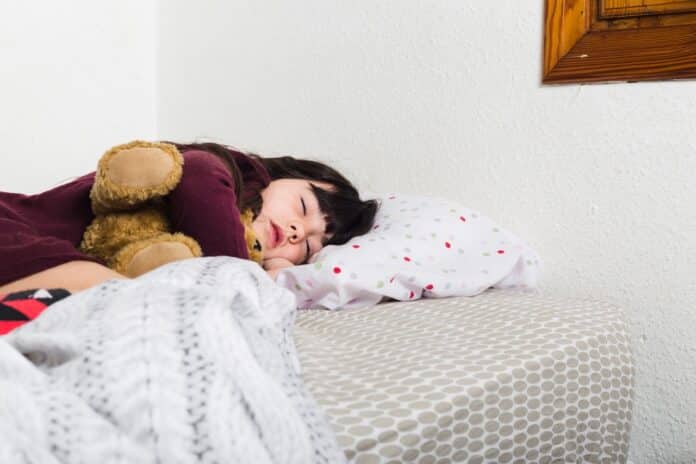The nap transition, which involves many sleep sessions leading up to a single nighttime sleep session, is a universal process in human development. Naps are essential for memory consolidation during infancy and the early years of development. To maximize early learning and foster favorable long-term cognitive results, it is essential to understand nap transitions.
Rebecca Spencer, a sleep researcher at the University of Massachusetts Amherst, has developed a new theory that suggests that young children discontinue naps based on a correlation between nap discontinuation and underlying memory and brain development.
Spencer, professor of psychological and brain sciences, who collaborated with co-author Tracy Riggins, a University of Maryland child psychologist specializing in memory development, said, “This overarching theory is based on data that we’ve published over the past couple of years; it’s about putting the pieces together, Collectively, we provide support for a relation between nap transitions and underlying memory and brain development. We’re saying this is a critical time of development in the brain, and sleep has something to do with it.”
The theory links the bioregulatory processes underlying nap transitions, concentrating on the hippocampus, the brain region responsible for remembering. Since naps help early children consolidate emotional and declarative memories, Spencer and her colleagues discovered that it may appear counterintuitive for young children to stop taking their regular naps.
Previous studies by Spencer and Riggins revealed that hippocampus development differs in children who nap and those who have stopped napping. Before being stored permanently in the cortex, memories are stored temporarily in the hippocampus. Young children endure increased “sleep pressure” when their developing hippocampus reaches the maximum number of memories that can be kept without interruption or forgetting.
Researchers measure the accumulation of homeostatic sleep pressure using EEG slow-wave activity, a neurobiological signature in the brain waves recorded during sleep.
Through sleeping, memories are moved from the hippocampus to the cortex, allowing the hippocampus to store additional data. The growing hippocampus is likened to a bucket of varied sizes, with an ineffective hippocampus filling up more quickly and overflowing, resulting in forgotten memories.
She said, “When the hippocampus is inefficient, it’s like having a small bucket. Your bucket will overflow faster, and some memories will spill out and be forgotten. That’s what we think happens with the kids that are still napping. Their hippocampus is less mature, and they need to empty that bucket more frequently.”
Children can stop napping when the hippocampus is better formed since their “bucket” won’t overflow. They can store memories until the end of the day when information from the hippocampus can be processed to the cortex during nocturnal sleep.
Spencer stresses the value of allowing all young children to take naps since it helps with their development and early education. A longitudinal study is required to promote the hypothesis since it would make parents and carers more aware that nap transitions cannot be decided by age and that the option to nap should be preserved for those who require it.
In the future, researchers might create a simple exercise for children to see if they have reached the point when they require frequent naps. However, the data supports the critical function of naps in young children’s development, as forced transitions out of naps may result in subpar learning and memory.
The new framework created by the researchers can be used to assess numerous unproven hypotheses from the field of sleep science and produce rules and regulations for naps in childcare and early education settings supported by science.
This result shows that the bioregulatory systems that influence young children’s sleeping patterns, and it turns out that transitions from naps to no naps happen at different ages in early childhood.
Journal Reference:
- Katharine Simon et al. Contributions of memory and brain development to the bioregulation of naps and nap transitions in early childhood. Proceeding of the National Academy of Sciences. DOI: 10.1073/pnas.2123415119
